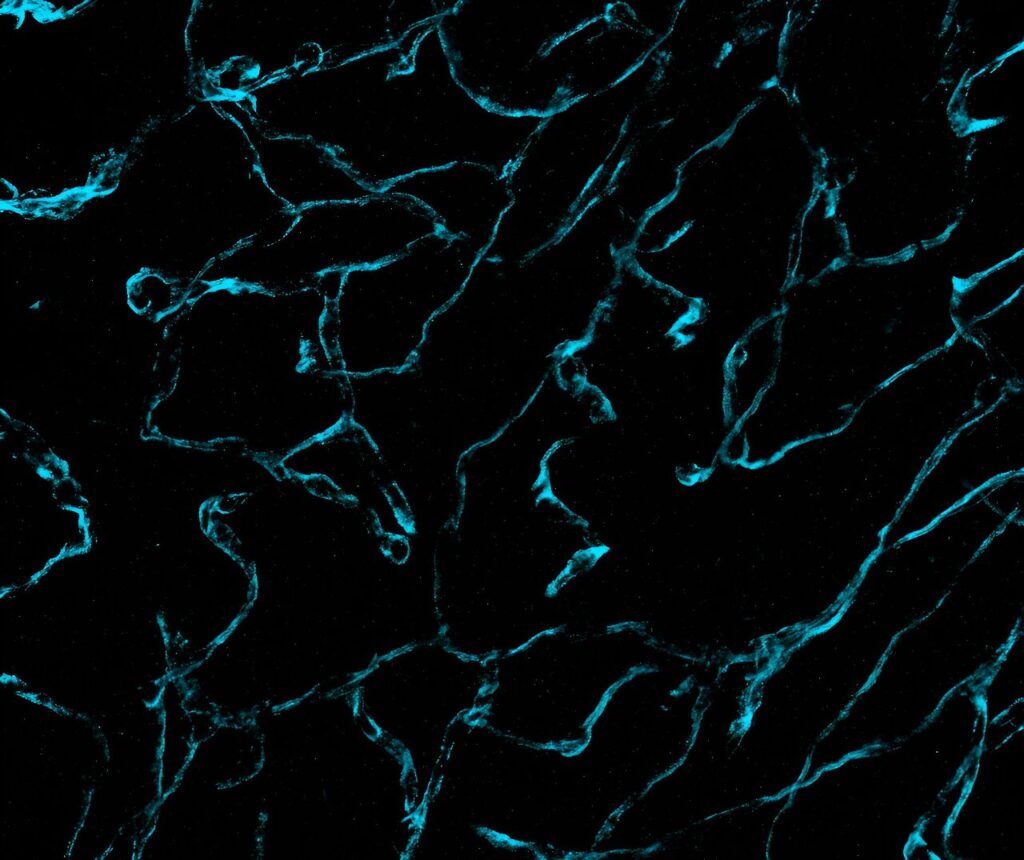Researchers from Brigham and Women’s Hospital and the Massachusetts Institute of Technology (MIT) have unveiled unprecedentedly detailed images of brain cancer tissue through the use of a new microscopy technology called decrowding expansion pathology (dExPath).Their findings, published in Science Translational Medicine, provide novel insights into brain cancer development, with potential implications for advancing the diagnosis and treatment of aggressive neurological diseases.
“In the past, we have relied on expensive, super-resolution microscopes that only very well-funded labs could afford, required specialized training to use, and are often impractical for high-throughput analyses of brain tissues at the molecular level,” said Pablo Valdes, MD, Ph.D., a neurosurgery resident alumnus at the Brigham and lead author of the study. “This technology brings reliable, super-resolution imaging to the clinic, enabling scientists to study neurological diseases at a never-before-achieved nanoscale level on conventional clinical samples with conventional microscopes.”
Researchers previously relied on costly, super-high-resolution microscopes to image nanoscale structures in cells and brain tissue, and even with the most advanced technology, they often struggled to effectively capture these structures at the nanoscale level.
Ed Boyden, Ph.D., the Y. Eva Tan Professor in Neurotechnology at MIT and co-senior author on this study, began addressing this problem by labeling tissues, and then chemically modifying them to enable uniform physical expansion of tissues. However, this expansion technology was far from perfect. Relying on enzymes known as proteases to break up tissue, scientists found that this chemical treatment with enzymes destroyed proteins before they could analyze them, leaving behind only a skeleton of the original structure, retaining only the labels.
Working together, Boyden and E. Antonio Chiocca, MD, Ph.D., Neurosurgery Chair at Brigham and Women’s Hospital and co-senior author on this study, mentored Valdes during his training as a neurosurgeon-scientist, to develop novel chemistries with dExPath to address the limitations of the original expansion technology.
Their new technology chemically modifies tissues by embedding them in a gel and “softening” the tissues with a special chemical treatment that separates protein structures without destroying them and that allows tissues to expand. This provided exciting findings to the MIT and Brigham researchers, who routinely use commercially available antibodies to bind to and illuminate biomarkers in a sample.
Antibodies, however, are large and many times cannot easily penetrate cell structures to reach their target. Now, by pulling proteins apart with dExPath, these same antibodies used for staining can penetrate spaces to bind proteins in tissue that could not be accessed before expansion, highlighting nanometer sized structures or even cell populations that were previously hidden.
“The human brain has several stop guards in place to protect itself from pathogens and environmental toxins. But these elements make studying brain activity challenging. It can be a bit like driving a car through mud and ditches. We cannot access certain cell structures in the brain because of barriers that stand in the way,” said E. Antonio Chiocca, MD, Ph.D., chair of the Department of Neurosurgery at the Brigham. “That is just is one of the reasons that this new technology could be so practice changing. If we can take more detailed and accurate images of brain tissue, we can identify more biomarkers and be better equipped to diagnose and treat aggressive brain diseases.”
To validate the effectiveness of dExPath, Boyden and Chiocca’s team applied the technology to healthy human brain tissue, high and low-grade brain cancer tissues, and brain tissues affected by neurodegenerative diseases including Alzheimer’s and Parkinson’s diseases. Investigators stained tissue for brain and disease specific biomarkers and captured images before and after expanding samples with dExPath.
The results revealed uniform and consistent expansion of the tissue without distortion, enabling accurate analysis of protein structures. Additionally, dExPath effectively eliminated fluorescent signals in brain tissue called lipofuscin, which makes imaging of subcellular structures in brain tissues very difficult, further enhancing image quality. Further, dExPath provided stronger fluorescent signals for improved labeling as well as simultaneous labeling of up to 16 biomarkers in the same tissue specimen. Notably, dExPath imaging revealed that tumors previously classified as “low-grade” contained more aggressive features and cell populations, suggesting the tumor could become far more dangerous than anticipated.
While promising, dExPath requires validation on larger sample sizes before it can contribute to the diagnosis of neurological conditions such as brain cancer. Valdes underscores that although still in its early stages, his team aspires for this technology to eventually serve as a diagnostic tool, ultimately enhancing patient outcomes.
“We hope that with this technology, we can better understand at the nanoscale levels the intricate workings of brain tumors and their interactions with the nervous system without depending on exorbitantly expensive lab equipment,” said Valdes who is now an assistant professor of neurosurgery and Jennie Sealy Distinguished Chair in Neuroscience at the University of Texas Medical Branch.
“The accessibility of dExPath will bring enable super-resolution imaging to understand biological processing at the nanometer level in human tissue in neuro-oncology and in neurological disease such as Alzheimer’s and Parkinson’s, and one day, could even improve diagnostic strategies and patient outcomes.”
Authors are Pablo Valdes (BWH and MIT), Chih-Chieh (Jay) Yu, Jenna Aronson, Debarati Ghosh, Yongxin Zhao, Bobae An (MIT), Joshua D. Bernstock (BWH and MIT), Deepak Bhere (BWH), Michelle M. Felicella, Mariano S. Viapiano, Khalid Shah (BWH), and co-corresponding senior authors E. Antonio Chiocca and Edward S. Boyden.


